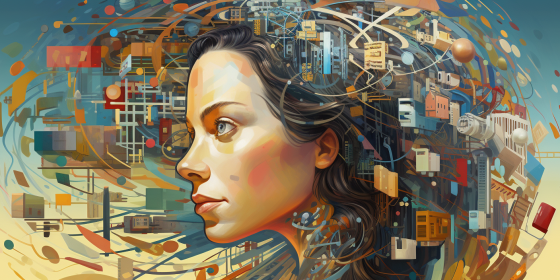Google Research, in collaboration with Tel Aviv University, has unveiled an innovative AI framework that combines a text-to-image diffusion model with specialized lens geometry for enhanced image rendering. This integration empowers the model to precisely control rendering geometry, enabling the generation of diverse visual effects such as fish-eye, panoramic views, and spherical texturing using a single diffusion model. In their latest research paper, scientists tackled the challenge of incorporating diverse optical controls into text-to-image diffusion models. The key breakthrough involves making the model consider local lens geometry, significantly improving its ability to replicate intricate optical effects and produce realistic images.
This approach doesn't just alter the standard shape of images; it allows for virtually any grid warps through per-pixel coordinate conditioning. This innovative method has broad applications, including panoramic scene generation that imparts a sense of presence and sphere texturing. Furthermore, the framework introduces a manifold geometry-aware image generation framework with metric tensor conditioning. This adds new possibilities for controlling and modifying image generation, unveiling numerous opportunities for creating and refining pictures.
The framework integrates text-to-image diffusion models with specific lens geometry through per-pixel coordinate conditioning. The process involves refining a pre-trained latent diffusion model using data generated through the distortion of images with random warping fields. Token reweighting in self-attention layers enables the manipulation of curvature properties, resulting in various effects such as fish-eye and panoramic views. This approach transcends fixed resolution in image generation and includes metric tensor conditioning for improved control.
Effectively, the framework integrates a text-to-image diffusion model with specific lens geometry, enabling a range of visual effects like fish-eye, panoramic views, and spherical texturing using a single model. It provides meticulous control over curvature properties and rendering geometry, leading to the creation of realistic and nuanced images. Trained on a substantial textually annotated dataset and per-pixel warping fields, the method produces arbitrary warped images with finely undistorted results closely aligned with the target geometry. Additionally, it facilitates the development of spherical panoramas characterized by realistic proportions and minimal artifacts.
This recently introduced framework, integrating diverse lens geometries into image rendering, offers improved control over curvature properties and visual effects. The researchers suggest extending this approach to achieve outcomes comparable to specialized lenses capturing distinct scenes, envisioning enhanced image generation and expanded capabilities through the utilization of more advanced conditioning techniques.








